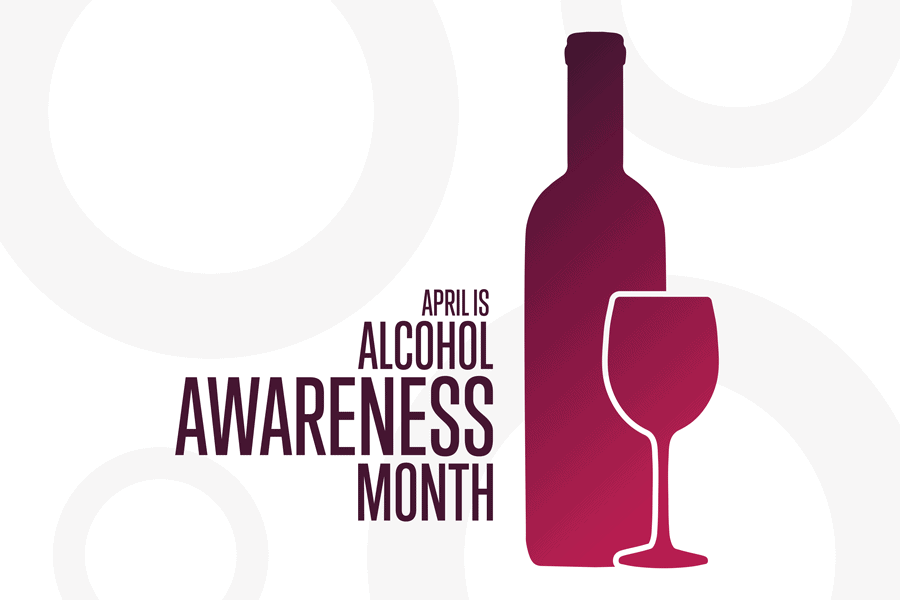
Alcohol Awareness Month: A Guide to Understanding and Responsible Consumption
Alcohol Awareness Month serves as a vital time for reflection and education about the effects of alcohol. It also provides an opportunity to learn responsible drinking habits and find support. This guide aims to provide straightforward, educational insights into alcohol, backed by facts and promoting low-risk behaviors. We’ll also address other pertinent topics relevant to […]
Alcohol Awareness Month serves as a vital time for reflection and education about the effects of alcohol. It also provides an opportunity to learn responsible drinking habits and find support.
This guide aims to provide straightforward, educational insights into alcohol, backed by facts and promoting low-risk behaviors. We’ll also address other pertinent topics relevant to this awareness month.
Understanding Alcohol
Alcohol, or ethanol, is a psychoactive substance found in beverages such as beer, wine, and spirits. It's produced through the fermentation of sugars by yeast. Once consumed, alcohol is absorbed into the bloodstream, affecting the central nervous system. It acts as a depressant, slowing down brain function and neural activity.
Alcohol Facts
- Prevalence: According to the World Health Organization (WHO), alcohol consumption contributes to 3 million deaths worldwide each year.
- Impact on health: The National Institute on Alcohol Abuse and Alcoholism (NIAAA) states that long-term heavy drinking can lead to many chronic diseases. These include high blood pressure, heart disease, stroke, liver disease, and digestive problems.
- Alcohol Use Disorder (AUD): AUD is a medical condition characterized by an impaired ability to control alcohol use despite social, occupational, or health consequences. It ranges from mild to severe and affects approximately 14.5 million people in the United States, per NIAAA.
- Economic cost: The Centers for Disease Control and Prevention (CDC) reports that the economic costs of excessive alcohol consumption in the U.S. reached $249 billion in 2010. This is primarily due to losses in workplace productivity, healthcare expenses, law enforcement, and other criminal justice costs.
Debunking Common Myths About Alcohol
Several myths surrounding alcohol can lead to misconceptions about its safety and effects. Addressing these myths is key to informed alcohol use:
- Myth: Alcohol is only harmful in large quantities. Fact: Even moderate drinking can have negative effects on the body and contribute to long-term health risks.
- Myth: Coffee can sober you up. Fact: Only time can reduce blood alcohol levels. While coffee might make someone feel more alert, it does not reduce the effects of alcohol on decision-making or coordination.
- Myth: Alcohol improves sleep. Fact: While alcohol may help individuals fall asleep, it reduces the quality of sleep by disrupting the sleep cycle.
The Effects of Alcohol on the Body
Alcohol's impact on the body is extensive, influencing various systems beyond the commonly understood effects on the brain and behavior. It's crucial to recognize these impacts to make informed decisions about consumption:
- Digestive system: Alcohol can irritate the stomach lining, leading to gastritis and its symptoms, such as bloating, pain, and potentially ulcers. Chronic heavy drinking may also interfere with nutrient absorption, causing deficiencies that affect overall health.
- Immune system: Every instance of heavy drinking can weaken the immune system, making the body more susceptible to illnesses like pneumonia. Chronic drinkers are at a higher risk for contracting diseases due to a consistently impaired immune system.
- Mental health: Alcohol misuse is closely linked with mental health disorders such as depression and anxiety. The use of alcohol can exacerbate these conditions, and individuals may use alcohol to cope with mental health issues.
Understanding these risks underscores the importance of moderation and the need for awareness around alcohol consumption.
Low-Risk Drinking Behavior
Low-risk drinking is defined as consuming alcohol in a manner that minimizes the risk of adverse health and social consequences. Here are some guidelines:
- Moderation: For women, up to one drink per day, and for men, up to two drinks per day, as recommended by the NIAAA.
- Avoidance of binge drinking: Binge drinking is consuming four or more drinks on a single occasion for women or five or more for men. Avoiding such patterns significantly reduces the risk of harm.
- Special considerations: Certain individuals should avoid alcohol altogether. These include those who are pregnant, are taking medications that interact negatively with alcohol, or have a history of AUD.
Support and Resources
Awareness also means knowing where to find support and resources for those struggling with alcohol use. Various organizations and programs offer help, including:
- Alcoholics Anonymous (AA): A group of individuals who share experiences, strength and hope to support one another.
- Substance Abuse and Mental Health Services Administration (SAMHSA): Provides a national helpline (1-800-662-HELP). They offer free, confidential help for those facing substance abuse or mental health issues.
- Local health services: Many communities offer local support groups, counseling services, and treatment programs for individuals and families affected by alcohol use.
Raising Awareness
Alcohol Awareness Month isn't just about understanding the dangers of alcohol. It's also a time to educate others, promote healthy choices, and support those in need. Activities can include community events, educational programs in schools and workplaces, and social media campaigns to spread the message.
Supporting Recovery and Treatment
Acknowledging the importance of recovery and treatment for those struggling with alcohol use disorders is a critical component of Alcohol Awareness Month. Here are key considerations:
- Accessibility to treatment: It is vital to ensure that effective treatment options are readily available and accessible to those in need. This includes inpatient and outpatient programs, therapy, and medication-assisted treatment.
- Ending stigma: Reducing the stigma around seeking help for alcohol misuse encourages more individuals to reach out for the support they need.
- Long-term support: Recovery is an ongoing process. Providing long-term support through aftercare programs, support groups, and community resources is essential for sustained sobriety.
Embracing Responsibility and Awareness
Alcohol Awareness Month is more than a yearly observance. It's a call to action for individuals and communities to address alcohol-related issues head-on. By understanding alcohol's effects, debunking common myths, and fostering a culture of moderation, we can make strides toward a healthier society.
Education and awareness are key to changing behaviors and attitudes towards alcohol, ultimately leading to reduced harm and improved public health. As we reflect on our own habits, let's commit to promoting responsible alcohol use not just this month but year-round.
As an alcohol server, it is your job and responsibility to recognize alcohol behavior and help prevent overservice. If you need an alcohol server certification or permit, please visit our state page and choose the state in which you serve alcohol for more training on this issue.



